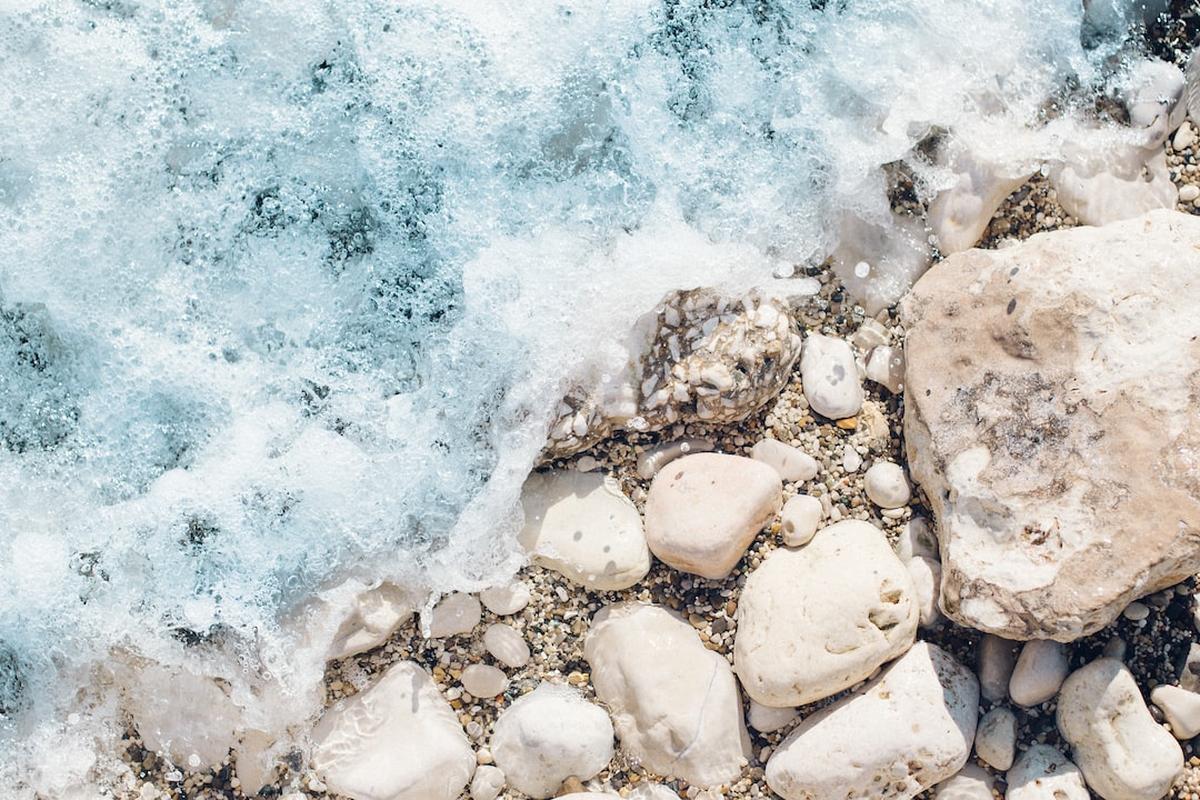Brief Overview of the Galapagos Islands
The Galapagos Islands, a volcanic archipelago in the Pacific Ocean, is renowned for its unique and diverse wildlife. The islands are situated on the equator, approximately 600 miles west of Ecuador, and are a part of its territory. The Galapagos archipelago is composed of 18 main islands, three smaller islands, and numerous islets and rocks, covering a total area of about 3,040 square miles. These islands are celebrated for their rich biodiversity and are considered a “living museum and showcase of evolution,” as famously described by UNESCO.
Importance of Understanding the Depth of the Galapagos Islands
Understanding the depth of the Galapagos Islands is crucial for several reasons. It offers insights into the geological history of the islands, the unique marine life it supports, and the influence of depth on ocean currents and climate. Moreover, it provides valuable information for conservation efforts aimed at preserving the unique biodiversity of the islands.
The Galapagos Platform: A Geological Perspective
Definition and Description of the Galapagos Platform
The Galapagos Platform is a broad, submarine platform located in the eastern Pacific Ocean. It is a geological feature that underlies the Galapagos Islands and extends for about 120,000 square kilometers. The platform is relatively flat, with an average depth of about 1000 meters, and is surrounded by much deeper oceanic crust.
Depth and Location of the Galapagos Platform
The Galapagos Platform is located at a depth of approximately 1000 to 2500 meters below sea level. It is situated beneath the Galapagos Islands and extends to the east and south of the archipelago. The platform’s location and depth play a crucial role in the formation and evolution of the Galapagos Islands.
Geological Formation of the Galapagos Platform
The Galapagos Platform was formed by a hotspot, a plume of molten rock rising from the Earth’s mantle. As the Nazca Plate moved over this hotspot, repeated volcanic eruptions led to the formation of the platform and the islands above it. The geological history of the Galapagos Platform is a testament to the dynamic nature of our planet and the processes that shape it.
Average Depth Surrounding the Galapagos Islands
Factors Influencing the Depth of the Surrounding Waters
The depth of the waters surrounding the Galapagos Islands is influenced by several factors, including the geological features of the ocean floor, tectonic activity, and sea level changes. The presence of the Galapagos Platform, for instance, significantly affects the depth of the surrounding waters.
Impact of Depth on Ocean Currents and Climate
The depth of the ocean around the Galapagos Islands plays a significant role in shaping the region’s climate and ocean currents. Deep waters influence the movement of ocean currents, which in turn affect the climate of the islands. For example, the deep, cold Cromwell Current, also known as the Pacific Equatorial Undercurrent, brings nutrient-rich waters to the Galapagos, supporting its rich marine life and influencing its unique climate.
Exploring the Deep Sea Environment of the Galapagos Islands
Unique Characteristics of the Deep Sea Environment
The deep sea environment of the Galapagos Islands is a world of extreme conditions, with high pressure, low temperatures, and complete darkness. Despite these harsh conditions, it is home to a diverse array of marine life, many of which have evolved unique adaptations to survive in this challenging environment.
Impact of Depth on Marine Life in the Galapagos
The depth of the ocean around the Galapagos Islands significantly impacts the marine life it supports. As depth increases, light diminishes, pressure increases, and temperatures drop, creating distinct zones inhabited by different species. For instance, the mesopelagic zone (200-1000 meters deep) is home to bioluminescent creatures like lanternfish, while the bathypelagic zone (1000-4000 meters deep) hosts deep-sea squid and anglerfish.
Marine Life in the Depths of the Galapagos Islands
Species Diversity in the Deep Sea Environment
The deep sea environment of the Galapagos Islands supports a diverse array of marine life. This includes a variety of fish, mollusks, crustaceans, and other invertebrates, many of which are not found anywhere else in the world. Some notable species include the Galapagos shark, the red-lipped batfish, and the Galapagos fur seal.
Adaptations of Marine Life to Extreme Depths
Marine life in the depths of the Galapagos Islands has evolved a range of unique adaptations to survive in the extreme conditions of the deep sea. These include bioluminescence for communication and hunting, highly developed senses to detect prey in the dark, and specialized bodies to withstand high pressure.
The Role of Depth in the Galapagos Islands’ Biodiversity
Influence of Depth on Species Distribution
The depth of the ocean around the Galapagos Islands plays a significant role in species distribution. Different species are adapted to different depth zones, resulting in a vertical zonation of marine life. This zonation contributes to the high biodiversity of the Galapagos marine ecosystem.
Impact of Depth on Species Evolution and Adaptation
The varying depths around the Galapagos Islands have influenced the evolution and adaptation of its marine life. The unique environmental conditions at different depths have led to the development of specialized traits in various species, contributing to the islands’ rich biodiversity.
Human Interaction with the Depths of the Galapagos Islands
Deep Sea Exploration and Research in the Galapagos
The depths of the Galapagos Islands have been a subject of scientific exploration and research. These explorations have provided valuable insights into the unique marine life, geological features, and oceanographic processes of the region. The use of advanced technologies, such as remotely operated vehicles (ROVs) and autonomous underwater vehicles (AUVs), has enabled researchers to explore these depths like never before.
Impact of Human Activities on the Deep Sea Environment
Human activities, such as fishing, tourism, and pollution, have impacted the deep sea environment of the Galapagos Islands. Overfishing has led to the decline of certain species, while pollution has resulted in damage to the delicate deep-sea ecosystem. It is crucial to manage these activities to preserve the unique biodiversity of the Galapagos.
Conservation Efforts in the Deep Sea Environment of the Galapagos Islands
Threats to the Deep Sea Ecosystem
The deep sea ecosystem of the Galapagos Islands faces several threats, including overfishing, pollution, and climate change. These threats can lead to the loss of biodiversity, disruption of food chains, and alteration of the delicate balance of the deep-sea ecosystem.
Conservation Measures and their Effectiveness
Several conservation measures have been implemented to protect the deep sea environment of the Galapagos Islands. These include the establishment of marine protected areas, regulation of fishing activities, and efforts to reduce pollution. These measures have been effective in preserving the unique biodiversity of the Galapagos, but continuous efforts are needed to ensure its long-term conservation.
Conclusion
Recap of the Depth and Importance of the Galapagos Islands
The depth of the Galapagos Islands, both in terms of its geological features and its influence on the marine ecosystem, is a fascinating subject of study. It provides insights into the geological history of the islands, the unique marine life it supports, and the impact of human activities on this delicate ecosystem. Understanding these depths is crucial for the conservation of the Galapagos Islands and their unique biodiversity.
Future Research Directions on the Depth of the Galapagos Islands
Future research on the depth of the Galapagos Islands could focus on exploring uncharted areas of the deep sea, studying the impact of climate change on deep-sea species, and developing innovative conservation strategies. Such research would not only contribute to our understanding of the Galapagos Islands but also help in preserving this unique natural heritage for future generations.
Frequently Asked Questions
Why is understanding the depth of the Galapagos Islands important?
Understanding the depth of the Galapagos Islands is crucial as it offers insights into the geological history of the islands, the unique marine life it supports, and the influence of depth on ocean currents and climate. Moreover, it provides valuable information for conservation efforts aimed at preserving the unique biodiversity of the islands.
What is the Galapagos Platform?
The Galapagos Platform is a broad, submarine platform located in the eastern Pacific Ocean. It is a geological feature that underlies the Galapagos Islands and extends for about 120,000 square kilometers. The platform is relatively flat, with an average depth of about 1000 meters, and is surrounded by much deeper oceanic crust.
How does the depth of the ocean around the Galapagos Islands affect its climate and ocean currents?
The depth of the ocean around the Galapagos Islands plays a significant role in shaping the region’s climate and ocean currents. Deep waters influence the movement of ocean currents, which in turn affect the climate of the islands. For example, the deep, cold Cromwell Current, also known as the Pacific Equatorial Undercurrent, brings nutrient-rich waters to the Galapagos, supporting its rich marine life and influencing its unique climate.
What are some unique characteristics of the deep sea environment of the Galapagos Islands?
The deep sea environment of the Galapagos Islands is a world of extreme conditions, with high pressure, low temperatures, and complete darkness. Despite these harsh conditions, it is home to a diverse array of marine life, many of which have evolved unique adaptations to survive in this challenging environment.
How have human activities impacted the deep sea environment of the Galapagos Islands?
Human activities, such as fishing, tourism, and pollution, have impacted the deep sea environment of the Galapagos Islands. Overfishing has led to the decline of certain species, while pollution has resulted in damage to the delicate deep-sea ecosystem. It is crucial to manage these activities to preserve the unique biodiversity of the Galapagos.
What are some conservation measures implemented in the Galapagos Islands?
Several conservation measures have been implemented to protect the deep sea environment of the Galapagos Islands. These include the establishment of marine protected areas, regulation of fishing activities, and efforts to reduce pollution. These measures have been effective in preserving the unique biodiversity of the Galapagos, but continuous efforts are needed to ensure its long-term conservation.
References
- Darwin, C. (1859). On the Origin of Species. London: John Murray.
- Geist, D., Howard, K., Jellinek, M., Rayder, S. (2014). The Galapagos: A Natural Laboratory for the Earth Sciences. American Geophysical Union.
- Glynn, P. W., & Wellington, G. M. (1983). Corals and Coral Reefs of the Galapagos Islands. University of California Press.
- Hickman, C. P., & Roberts, L. S. (2008). Integrated Principles of Zoology. McGraw-Hill.
- UNESCO. (2001). Galapagos Islands. UNESCO World Heritage Centre. Retrieved from http://whc.unesco.org/en/list/1.
- White, W. M., McBirney, A. R., & Duncan, R. A. (1993). Petrology and geochemistry of the Galapagos Islands: Portrait of a pathological mantle plume. Journal of Geophysical Research, 98(B11), 19533-19563.







